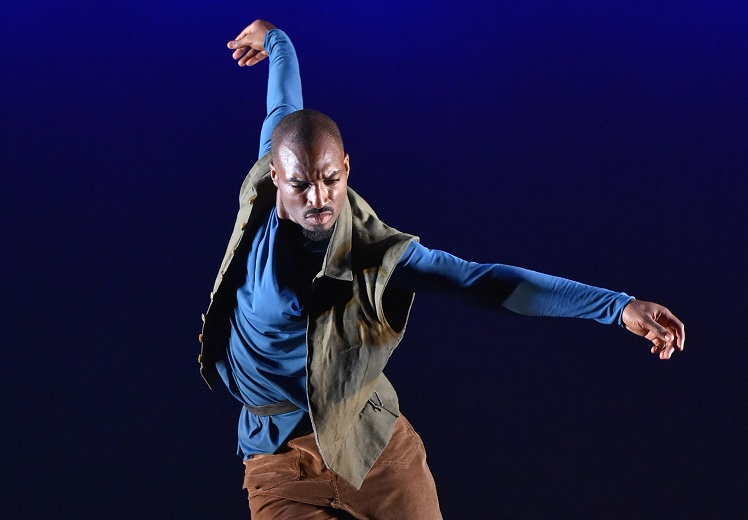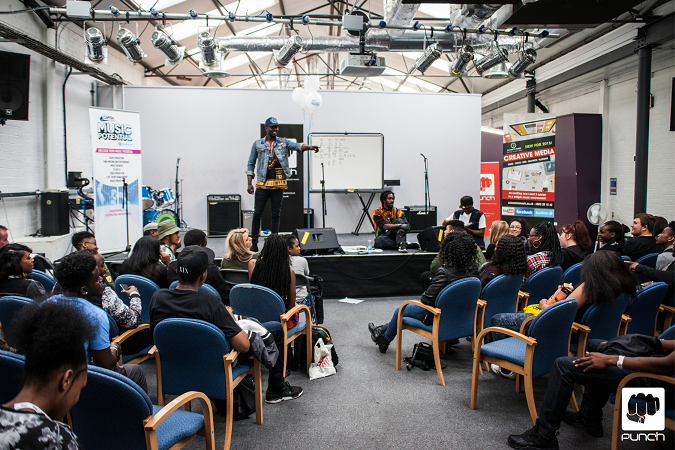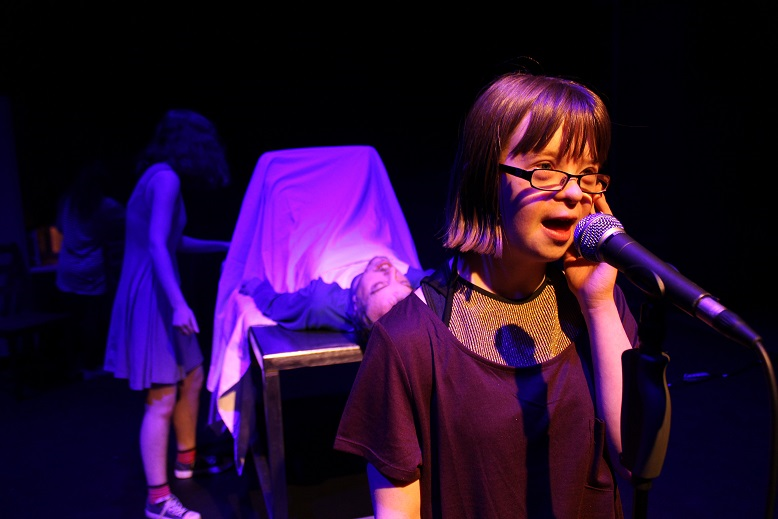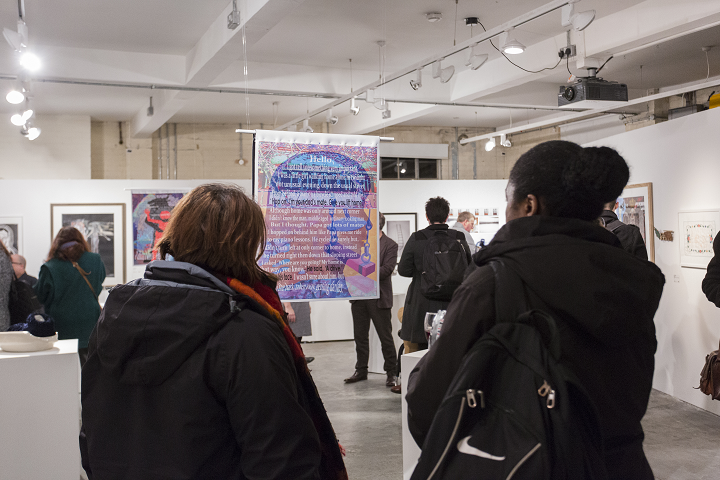
Undivided Loves, Phoenix Dance
Photo: Brian Slater
Arts diversity: None of this is new
We’ve been reading, writing and speaking about diversity in the arts for decades. In the third in a series of articles, Christy Romer says perhaps there’s nothing new to say – but the sector still has to hear it.
“There may be a shortage of diverse talent working within our arts institutions, but there is no shortage of diverse talent operating as freelancers, working resiliently, without funding, without sustainable networks and without the resource of a building or infrastructure.” – Jenny Williams, writing in AP in 2011
Conversations about diversity are repetitive. It is telling that the central recommendations in the articles, reports and talks to have filtered through AP over the past 20 years – the Eclipse Report, the Whose Theatre? Report – carry the same initially shocking, but increasingly weary diversity recommendations. Train people from all backgrounds. Monitor who has access to opportunities. Consider quotas. Make sure organisations have a diversity of thought and experience in both artistic and non-artistic positions. Embed change, rather than pasting equality on top. Diversify boards – even if that means recruiting people who may not have ‘top level’ board experience.
This should be simple. But it doesn’t seem to have happened, and a similar weariness emerges in people’s qualified assessments of what has happened to the arts in recent memory. Deborah Annetts, Chief Executive of the Incorporated Society of Musicians (ISM), said: “I think music’s journey on diversity over the past 30 years has been mixed. There’s a better awareness of diversity at board level, but there are still some sizeable institutions where there are no women in leadership positions.”
| “ACE has tried many approaches. You have to look back at a history of 30 plus years, which is full of policies that never quite worked. If we look at policies that wanted to encourage better BAME representation, I think the policies failed because BAME artists were not directly consulted in how the policy could be well delivered.” – Arti Prashar, Spare Tyre |
Tony Heaton, Shape Arts CEO, said: “We’ve certainly moved in the right direction. But we [disabled artists] were the bottom of the pile, so this shouldn’t be something we’re proud of or patting ourselves on the back for. It’s been a long time in coming.”
Sharon Watson, Artistic Director of Phoenix Dance, said that while BME dancers are no longer “congregated together” as they were when she was a dancer, and are finding work across the country, the “pendulum has swung the other way” in recent years and she’s been forced to headhunt to ensure she casts diversely. “There shouldn’t be a shortage, considering how many dancers are entering dance training,” she said. “Something outside the UK is working but it’s not happening here.”
Theatre is no exception. Kristine Landon-Smith, Artistic Director of Tamasha’s production of East is East, said: “There was optimism in the late ‘90s, but looking back on history it now feels short-lived. From ‘97 to 2006 there was optimism and one felt real support.”
Lucy Kerbel, Director of Tonic Theatre: “There’s been a burst of energy over the past five years and that is to be greatly celebrated. But there’s still far to go in regards to the profile and prestige imbalance for women in the arts.”
Sarah Holmes, Chief Executive of the New Wolsey Theatre: “There’s been a lot of chat for a very long time. Mainstream mid-scale theatre has come absolutely nowhere since the ‘80s. But now, diversity is becoming more of an agreed agenda.”
Again and again, the same answer: maybe it’s not fair to say that nothing has changed, but here we are, answering the same fundamental questions about diversity. Very few people seemed wholeheartedly optimistic about change. Some were blunt – Kully Thiarai, Artistic Director of National Theatre Wales, said change has been “excruciatingly slow”. Some were outright downbeat: “We are fighting uphill. But we don’t lose every battle. Oh god… I just find the whole thing depressing, that we’re still having these conversations,” said Jenny Sealey, Artistic Director of Graeae.

Risk
“It is often felt programmers assume that cultural diversity programming is ‘risky’. However, although ‘safe’ product has failed at the box office, this has not stopped artistic directors from consistently programming in this way.” – Eclipse Report, 2001
The question, as ever, is why. ‘Risk’, say some. Indhu Rubasingham, Artistic Director of the Tricycle Theatre, said the arts “definitely have come far since the ‘90s”, but emphasised the difficult context arts organisations operate in. “None of us have the money for failure. As a venue, you’re constantly faced with the questions: how do I sell tickets? How do I survive? How do I work on such tight financial budgets and still take risks? If you have two financial failures, you’re in an incredibly difficult situation.”
For her, the issue was not an elite and racist set of gatekeepers: “No-one is intentionally saying, ‘I’m only going to do white, male work’.”
| “‘Risk’ is a good one to hide behind in times of austerity. You need difference. Locally, Birmingham is 42% BME, yet major arts organisations talk about struggling to recruit board members, senior managers, artists and audiences.” – Ammo Talwar, Punch Records |
Playwright Roy Williams echoed this, saying casting and programming decisions were driven by economic necessity: “If a theatre in the South-East has to do a panto once a year, and they choose a white lead, that’s not because of racism. They’re just likely to make a safe bet – or a celebrity choice. If it came down to it, would they really turn down Lenny Henry for six weeks? No.”
Candoco Dance Company’s Pedro Machado also questioned whether work of his had been turned down because it was ‘diverse’: “There have been venue directors who have told us that they like our work but find it too ‘risky’ or inappropriate to present to their audiences. They say this, not because we make work with disabled dancers, but due to some bold choices in our repertory. We have learned that some pieces are better received abroad for instance. Sometimes we commission work from artists who are not known in the UK and this can be difficult for venues as they aren’t always familiar faces or names to help attract audiences.”
But what if some venues are actively choosing to do white, male, non-disabled work? Jenny Sealey flatly rejected the idea that prejudice was not a factor: “People have absolutely turned us down in the past because they’re scared of the ‘risk’ of disabled people on stage, or – god forbid – black and disabled.” Rifco’s Artistic Director, Pravesh Kumar, said something similar: “I don’t think the reasons Rifco sometimes doesn’t get booked are all economic. Some shows that got five stars, lots of tickets, and a full house didn’t get a call to come back.”
He said there were multiple people to blame: “Sometimes it’s producers, sometimes executive directors, sometimes the marketing department who say they can’t sell the show.”

Marketing
So another reason for the lack of change – incompetent marketing? This is still a factor, according to Bryan Savery, former Executive Director at Rifco. “So many” theatres get it wrong and are “stuck in the headscarf age” for Asian audiences, he said. “We got emails saying ‘can we put Ganesh on the poster for your show?’. If you have to ask that question, why are you doing the show? When we marketed, we put things in the poster only British Asians would know – the colour of the turban, or a certain bangle, for instance.”
| “It is important to remember that addressing ethnic identity alone is not enough to satisfy the market, and that audiences can always smell tokenism.” – Heather Maitland and Mel Jennings, writing in AP in 2005 |
Bumbling offense, borne out of fear, was picked up by Mind the Gap’s Resident Director Joyce Lee in conversations about marketing strategy: “Some marketing directors wonder if they should say the play features disabled artists, or if an audience will feel like they’ve been ‘cheated’ if they’ve not been told. And the answer is no – you should view a piece of art by its artistic merit. If it is a piece about disability, sell it like that. If not, it shouldn’t be a consideration. Disability is not a card or a plot line.”
And what about investing time in diverse shows and performances? According to some, it isn’t happening. “It takes a while for audiences to grow,” said Diverse City’s Claire Hodgson. “When you have an interpreter, and it doesn’t sell to a Deaf audience – did you market it properly? You can’t just assume it’ll work. It might take two years to develop a Deaf audience.”
Artistic Director of Tara Arts Jatinder Verma offered similar advice to venues: “We’re all engaged in the same battle – to have sustained audiences. You have to think in terms of multiple shows, multiple audiences, and by doing that you can change the identity and cast the ‘we’ve had our black show’ argument aside.”

Audiences
But maybe arts organisations have their hands tied when it comes to diversity? Maybe audiences (especially those in whiter, richer and older areas) resist ‘diverse’ work? While people did say touring in general was becoming harder – Tara Arts’ Jonathan Kennedy called it a “much grimmer scene” – this idea was consistently rejected in interviews. Director Elizabeth Freestone said: “I can’t believe that there are audiences that only like to see themselves reflected. We often find the opposite. When people say audiences won’t like x or y, that’s the industry second-guessing the audience. If a show is a hard sell, it’s a hard sell, no matter where you are in the country. Audiences want content and they want stories.” Artistic Director of the Unicorn, Purni Morell, offered this simple response: “We have no evidence of what people in their 80s think. Do we actually know they’re racist?”
| “If you go to the Hampstead Theatre, every time I look at the posters I see blonde white women. I asked the students at Central School of Speech and Drama if there if they go to shows there, and they said no – it’s just posh white people. Even the young people training to go into theatre not don’t go because it doesn’t reflect their life.” – Tanika Gupta, Playwright |
And far from demographic differences making it difficult to create diverse work, making work for all audiences strengthens art, said Kerry Michael, Artistic Director at Theatre Royal Stratford East. “The more diverse the work is, the harder the work has got to work to be excellent. If you do Hamlet in front of 400 black kids, it’s a certain kind of show. If you do it in front of 400 older white women in the Cotswolds, it’s a certain kind of show.
“But if a show can work with both those audiences, it’s a much better show. It’d be easy for us to do black kids in hoods doing hip hop. But the more mixed you make your audience, the more complicated and rich the work has to be to work.”
Real changes
“Despite facilitating a number of key initiatives (Pearson and ACE publishing scholarships, Sustained Theatre and Decibel, to name just three) and implementing the Race Equality Scheme in 2004, ACE has not outwardly tackled what appears to be stagnant complacency within some parts of the arts sector.” – Liz Hill, writing in AP in 2010
None of this is new. None of this would be a shock to people who’ve written about and worked in the sector for the past 10, 20, 30 years.
But the sector needs reminding because responses like this one, from Tony Heaton, still abound: “There’s been a massive change over the past 25 years. Discrimination was overt and obvious back then, but now it’s much more subtle. For instance, people say you can come into the theatre, but maybe there’s only two or three places. So even if the theatre is empty, but the wheelchair spaces are taken, you can’t see the show.
“I think there were more disabled people in the arts 10 or 15 years ago. I think it’s a general erosion, where it’s just too difficult to work, too many barriers.”
This is worrying. And equally worrying is the idea that if nothing major changes, progressive organisations will be unable to sustain their push for genuine equality. “Graeae and others like us are constantly chomping at the bit,” said Jenny Sealey. “We’ve been saying the same thing for a long time, and you lose your nerve and your energy after a bit. I’ve tried every tactic: nicely nicely, naming and shaming, being aggressive.
“The only tactic I feel is best for Graeae is to keep doing good work.”
But you knew this already.
Christy Romer is Publishing Executive at ArtsProfessional.
Click to read ArtsProfessional’s latest news, research and feature on diversity in the arts
Join the Discussion
You must be logged in to post a comment.